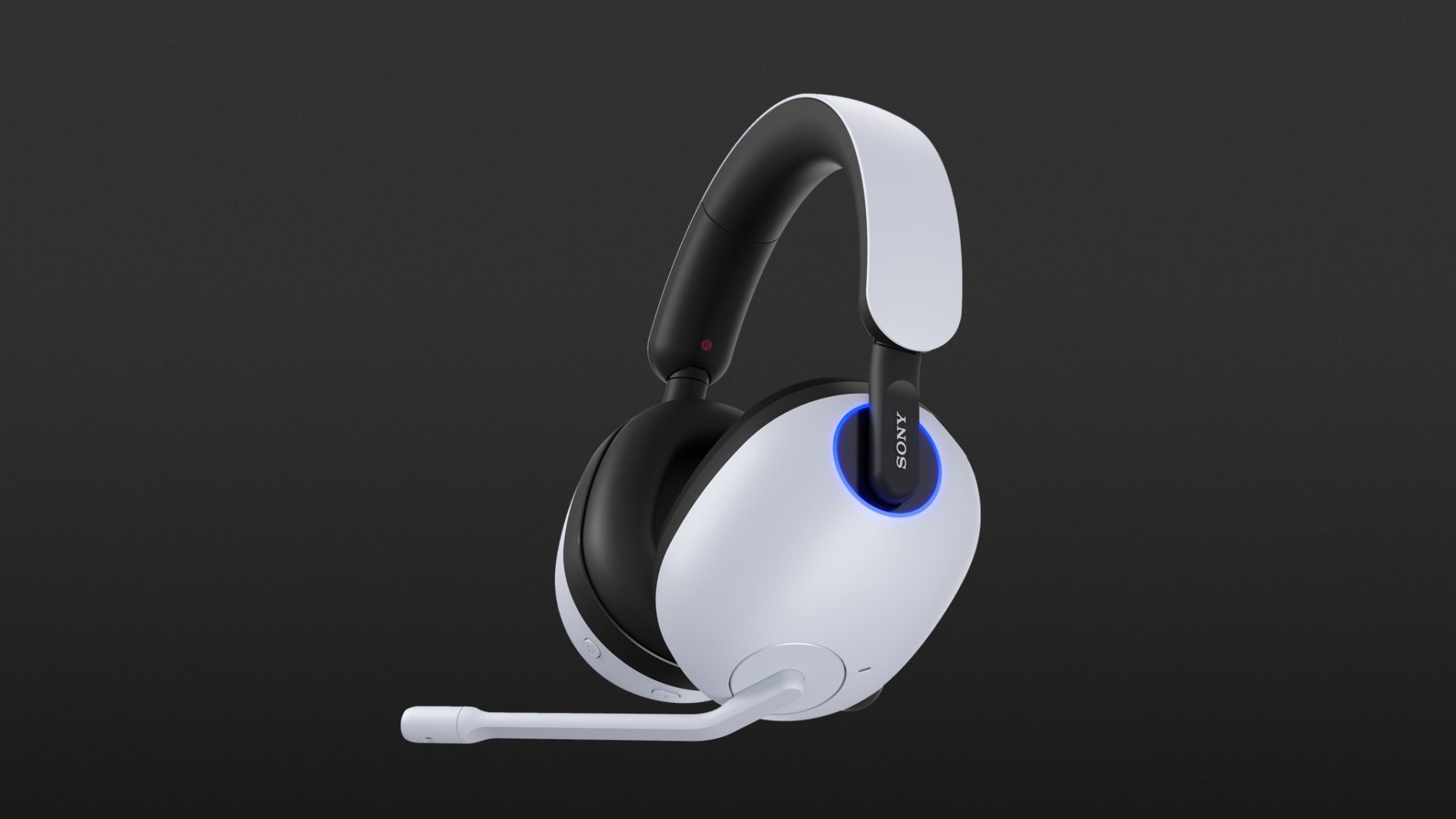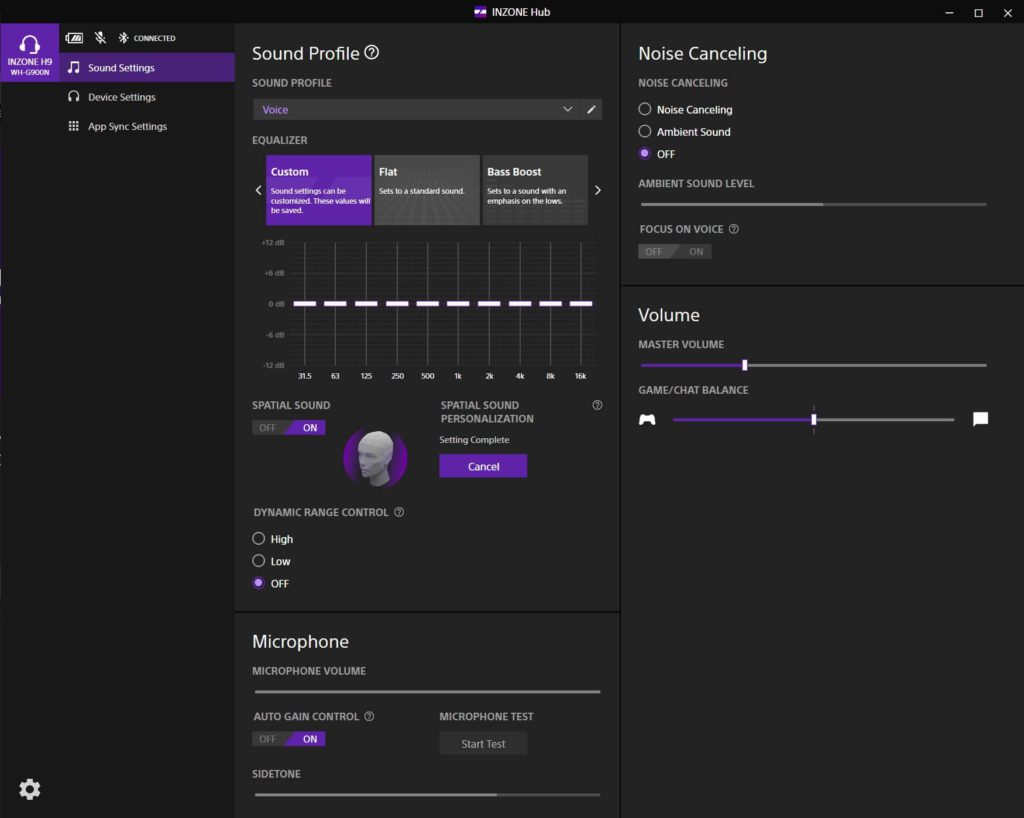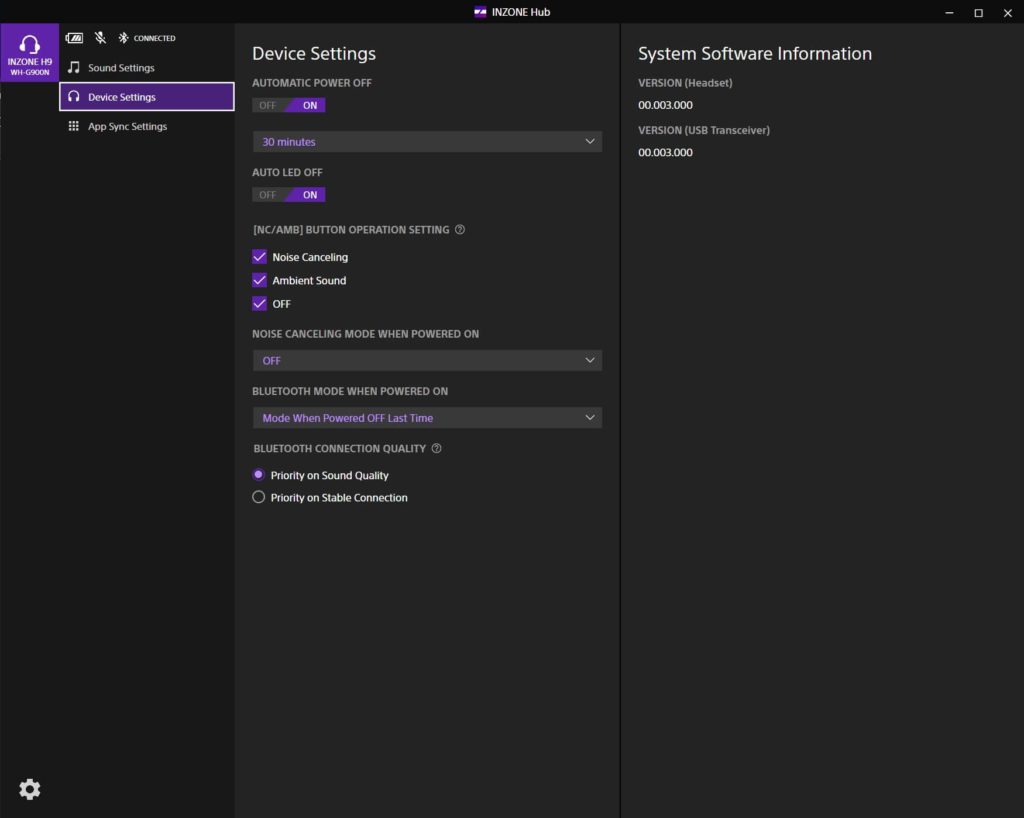If you’re looking for a high-tech gaming headset styled like the Playstation 5 and want very good noise cancellation, the Sony Inzone H9 is definitely worth a look. The real killer feature here is the ability to use wireless and Bluetooth connections in parallel and to control separate output arrays for the game and chat audio. However, you have to make concessions for the sound quality and features, which, for me, was hardly justifiable in this price range. Sony must improve on this if the fledgling “Inzone” brand is to have a future.
- High wearing comfort
- Separate driver components for game and chat
- Wireless and Bluetooth can be used simultaneously
- 360 Spatial Sound
- Good range of functions in the Inzone Hub
- Quality and operation of the microphone
- Spartan contents of delivery
- Confusing controls on the headset
The Sony Inzone H9 is a gaming headset styles after the Playstation 5 and offers very good noise cancellation (noise cancelling, ANC) as well as the possibility to use wireless and Bluetooth connections in parallel. However, the sound quality and features require some sacrifices, which make a big difference at a list price of 299 euros.
With its new “Inzone” product line, Sony is walking a tightrope between two very different parts of the company, both aesthetically and technically. The design idiom is blatantly based on the Playstation 5 along with the Pulse 3D headset, which was launched in 2020 as an accessory for the gaming console. Unlike that gaming headset, however, the three new Inzone-branded headsets are also aimed at PC gamers, who – particularly with the top-of-the-line Inzone H9 – are being lured in with premium features from Sony’s headphone division.
Package
The Sony Inzone H9’s packaging does not contain any plastic. In addition to the headphones and a quick start guide, there is only the USB wireless transmitter and a 1.5-metre USB-C to USB-A charging cable in the box. This earns them high praise for their attempt at sustainability, but I couldn’t understand why there was neither a textile pouch, a case, nor replacement ear pads to be found in the package. Sony supplies considerably cheaper headphones with cases but has not provided them with this high-end model in a new product line.
The oval ear pads are made of a plastic material Sony calls “soft-fit leather”, which was also used on the popular WH-1000XM series headphones. As comfortable as this soft faux leather may be, it is unfortunately also prone to sweat and fingerprints.
The Inzone H9’s white and black colour scheme is, of course, inspired by the Playstation 5 and is sure to polarise audiences just as much as the console’s styling does. Sony’s current WH-1000XM5 was the inspiration for the design of the earpiece shape and suspension. As a wearer of glasses, I’m used to uncomfortable pressure on the earpieces of headphones that wrap around my ears, but that did not happen here: the rotating ear cups are slightly splayed and fit securely and comfortably with minimal pressure. The earpieces are extendable and can be worn comfortably, even by those with large heads.
Technology
The Sony Inzone H9’s list of features impresses with some high-tech functions that are combined in a headset that has a distinct focus on gaming. Of course, ANC and transparency mode are available on other models, but since they’re based on the esteemed WH-1000XM, here they’re realised with a quality that the Razer, Steel Series and others struggle to match. The Inzone H9 suppresses construction site and traffic noise very competently; it filtered fans and blowers completely out of my perception. The transparency mode was less noisy than my Apple AirPods Pro and was sufficient to hear the doorbell or a knock on the door.
Arguably one of the most striking features is the ability to be connected to different devices simultaneously via Bluetooth and 2.4 GHz wireless connection. Depending on the intended use, this opens up a wide range of possibilities: for example, you could play on the Playstation 5 at the same time as Discord (or another app) is running on your phone for voice communication. Or remain reachable during a gaming session on the PC by immediately accepting a call on the headset. For the wireless connection to work, the supplied USB transceiver must be used, and it has a stated range of 10 metres, but it worked fine for me, even in the garden.
Wired use of the Inzone H9 is not provided for, there is no 3.5mm jack, and the USB-C jack is used exclusively for charging the headphones. I was not quite able to achieve the specified runtime of 32 hours (without using ANC); after just under 25 hours of active use, I had to give the headphones a new charge. This may be due to my tests with ANC, but my test device obviously had problems with the self-switch-off. An LED indicates the search for WiFi or Bluetooth devices by flashing white and blue. Unfortunately, in my case, this search took several hours instead of the default five minutes. There may have been a communication problem between the control software and the headphones, but the continuous flashing was irritating and always led me to switch off the unit manually.
Operation
If and how many buttons a pair of headphones needs is effectively a solved problem. “Less is more” has little to do with minimalism here; it’s simply not practical to pile up button functions on a device you can’t see. For reasons I don’t understand, Sony has given the Inzone H9 five function keys in addition to the excellent volume wheel, some of which have multiple functions. One button switches between ANC, transparency mode and no post-processing, while another controls the Bluetooth function but can also be used to select music tracks. The Game/Chat button allows independent control of chat and game volume – a great feature but one that is difficult to control without being able to see the headphones. Finally, there is a power button that has Playstation-inspired acoustic feedback. Each of the five buttons has a slightly different shape, yet I was only able to memorise the position of the power button during the three-week test period. Ironically, there is no dedicated button for muting the boom microphone, but more on that later.
Digital control centre
In addition to operating with a Playstation 5 and Windows PCs, in principle Sony’s Inzone H9 also works with Apple computers. The wireless dongle shows up as an audio device with one mono input and two stereo outputs. This is where the distinction between chat and game audio mentioned in the last paragraph comes into play. This means that the volume of the communication app and the game can be completely separated and you always keep control of important team communication. Like the other Inzone headphones, the H9 is immediately recognised by the Discord app and is designated as “certified”. Unfortunately, I still had to set the microphone’s pre-amplification to “maximum” and even then, I remained one of the quieter users in the chat. The sound quality of the microphone was acceptable, but significantly worse than cheaper in-ear headsets from Sennheiser and Apple.
Unfortunately, Sony has also skimped on the fold-away microphone boom. Since it does not have its own mute button, it has to be folded upwards so that a relay mutes the input. But since the construction of the arm is susceptible to structure-borne noise, it rumbles until the mute button is activated at the other end of the line. In games, there is decidedly a trend towards voice-activated noise gates, but particularly in larger groups, as well as in e-learning and work-from-home situations, manual control over the mute is of utmost importance.
In the Windows app “Sony Inzone Hub”, it is possible to control additional headset functions. EQ curves, dynamic range and monitoring of your own microphone level are possible here, as well as detailed levelling of the game and chat volumes. If you have sent ear photos to Sony with the smartphone app “360 Spatial Sound Personalizer”, you can load the generated HRTF profile and enjoy improved stereo and 3D sound reproduction. The effect was also noticeable with stereo sources, and it moved sounds “deeper” into the room, but only unfolded its full effect with music tracks, films and games specially encoded for Sony’s 360 Audio.
Sound
According to Sony, the 40mm neodymium drivers were designed specifically for both the Inzone H7 and H9 models, with a focus on reproducing extremely low and high tones. Indeed, the Inzone H9 had no problem reproducing deep bass or the highest treble. But, to me, it seemed that the balance of the whole thing was more of a musical experience. With movies, and especially with computer games, this was different; here, the Inzone H9 can come up with differentiated soundscapes, explosions were punchy, and footsteps could be located well. When listening to music, I had to lower the high frequencies a little to prevent premature fatigue. Bass-heavy productions like the current album “Cheat Codes” by Danger Mouse & Black Thought had a lot of pressure, but the differentiation between bass and kick drum was sometimes a bit swampy. The bottom line is that the sound quality of the Inzone H9 didn’t blow me away; Sony has objectively delivered better sound before for less money.
Technical specifications
- Ear couplingOver-ear
- Typeclosed
- Transducer principledynamic
- Frequency response (headphones)5 - 20.000 Hz
- Weight without cable330 g
- Cable length150 cm
What's in the box
- USB cable
- USB transceiver
Special features
- BT codecs: SBC, AAC
- BT version: 5.0
- BT profiles: HSP, HFP, A2DP, AVRCP













































